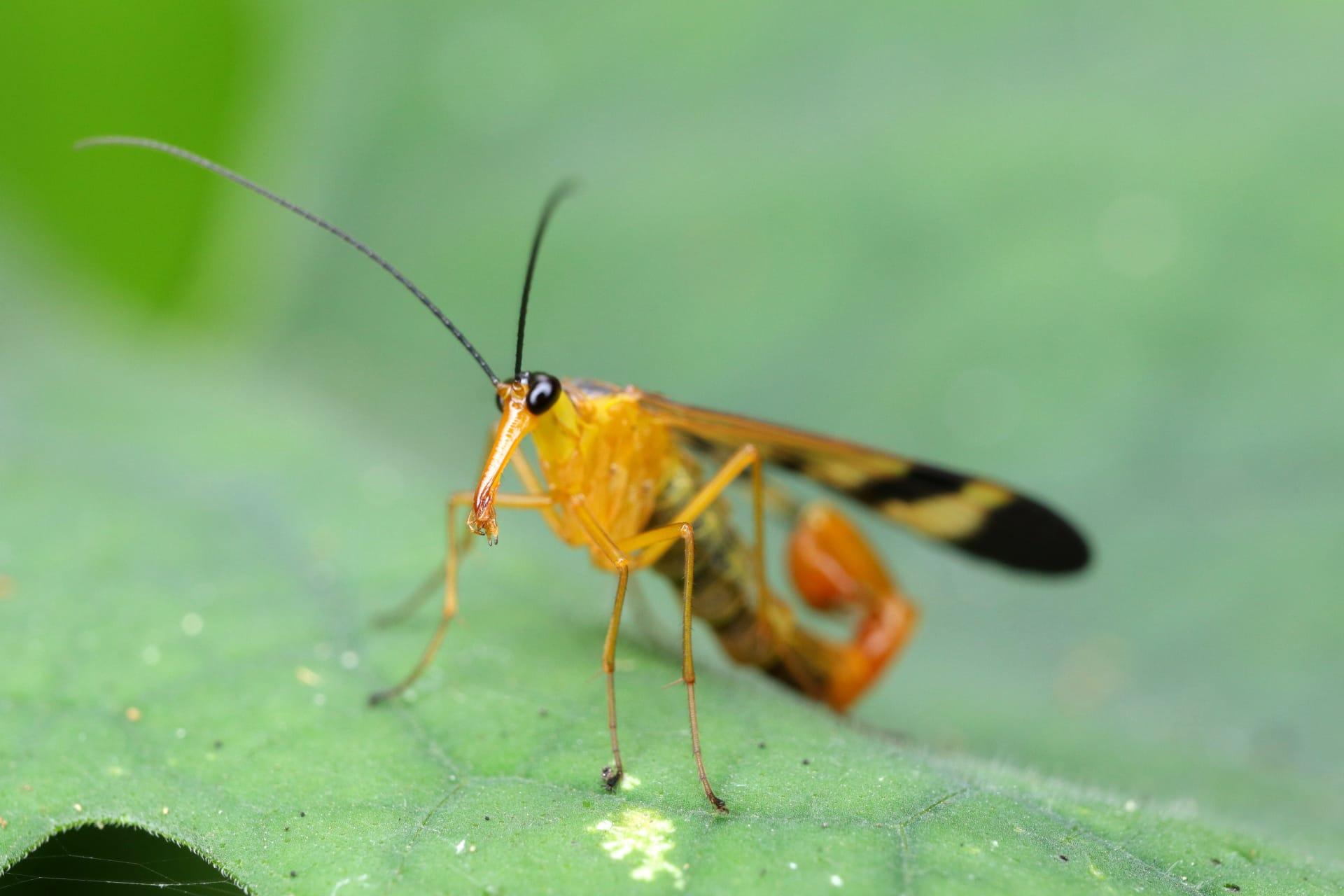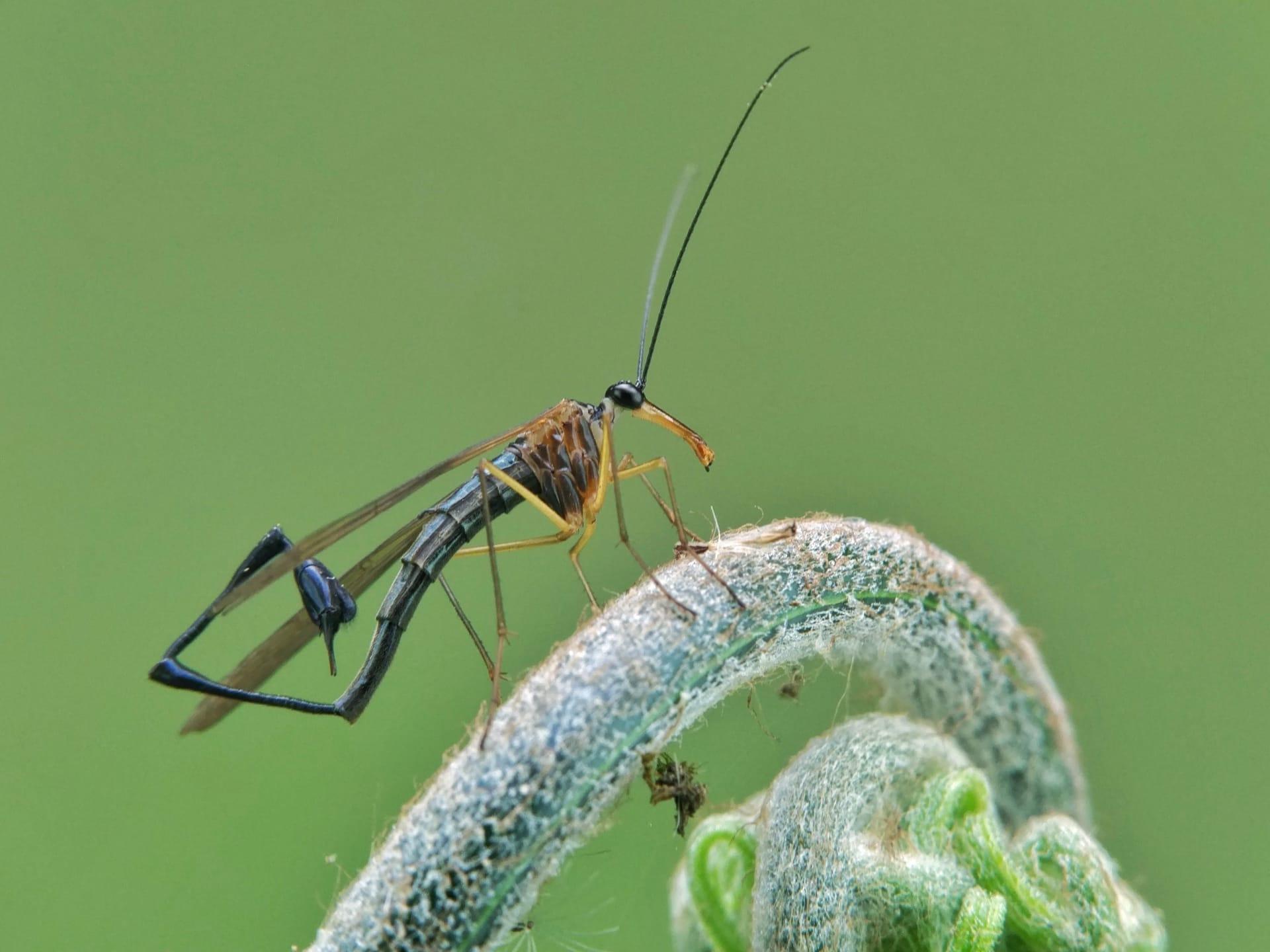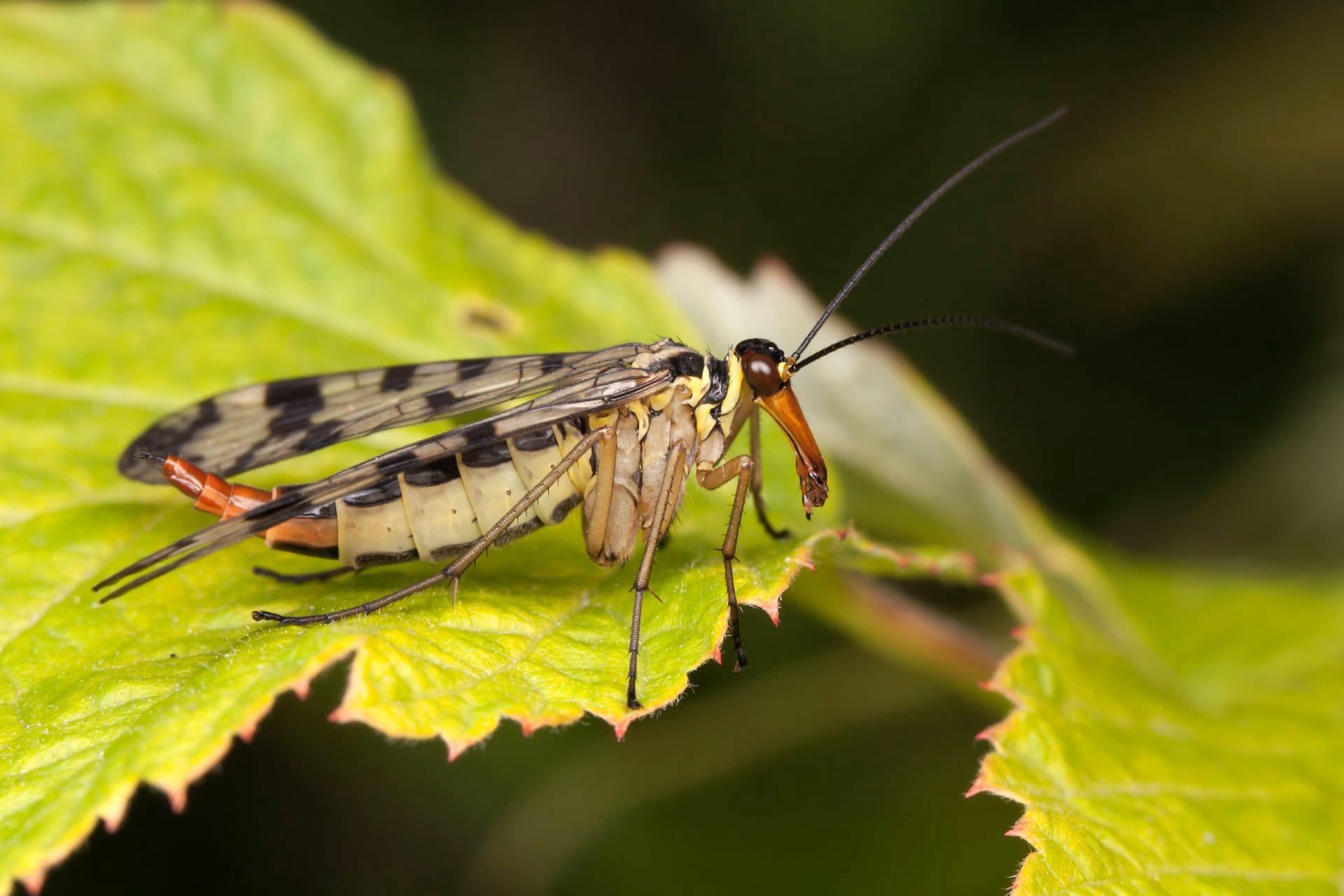Scorpion Fly
- Home /
- Mini Encyclopedia /
- Animal /
- Scorpion Fly
1
Scorpion flies, belonging to the order Mecoptera, are a group of insects known for their extended heads and curled tails, resembling scorpions. This order comprises over 600 species, classified under nine families. The most well-known family is Panorpidae, which features the common scorpion fly. These insects have a distinct morphology: males possess a tail that curves over the back, ending in a bulbous segment, while females have a simpler, straight abdomen.
Scorpion flies are predominantly found in Northern Hemisphere regions, including North America, Europe, and Asia. Their habitat preference varies from species to species, but they are generally found in moist, shaded environments like forests and meadows. Some species are even adapted to living in arid regions. They are most active during spring and early summer, which is their mating season.

2
Question: Are scorpion flies dangerous like scorpions due to their name and tail’s appearance?
Answer: Despite their name and the scorpion-like appearance of their tails, scorpion flies are not dangerous to humans. They lack venom and the ability to sting. Their name comes solely from the male's tail structure, which is used for mating purposes and not for defense or attack. These insects are actually harmless and play a role in the ecosystem as decomposers and pollinators.

3
Scorpion flies have developed unique survival strategies to thrive in their environments. One key strategy is their scavenging behavior. They primarily feed on dead or dying insects, plant materials, and sometimes carrion. This diet helps control insect populations and aids in the decomposition process in nature. Additionally, they are known for their sneaky mating strategy, where males often present females with a prey item or a saliva secretion as a nuptial gift to distract them during copulation.
Another survival tactic is their ability to mimic their surroundings. Many scorpion fly species have a body color and shape that blends with the foliage and bark, providing them camouflage against predators. They are also adept at sensing vibrations, which helps them detect and evade approaching threats. These adaptive traits ensure their survival and successful reproduction in various habitats.

4
In the ecosystem, scorpion flies hold a crucial relationship with other organisms. As scavengers, they contribute significantly to nutrient cycling by feeding on decaying organic matter. This process aids in breaking down dead material, returning nutrients to the soil, and maintaining ecological balance.
Scorpion flies also play a role as prey for various predators, including birds and larger insects. This predation forms a part of the food web, supporting the energy flow in ecosystems. Moreover, they are occasional pollinators for certain plants, thus contributing to plant reproduction and biodiversity. Their diverse roles underline the importance of scorpion flies in maintaining healthy and functioning ecosystems.

5
Film: "Winged Predators: The Secret World of Scorpion Flies" is a documentary produced in the United States in 2019. It explores the mysterious life of scorpion flies in North American forests. The film showcases their unique mating rituals, scavenging habits, and their role in the ecosystem, providing viewers with a rare glimpse into the lives of these intriguing insects.
Book: "Insects Unveiled: Scorpion Flies" is a comprehensive guide authored by Dr. James H. Martin, published in the UK in 2017. The book delves into the biology, behavior, and ecological significance of scorpion flies. It offers detailed insights into their life cycle, habitats, and the challenges they face in the wild.
Book: "The Hidden World of Mecoptera" by Dr. Linda E. Thompson, published in Canada in 2021, focuses on the broader order of Mecoptera, including scorpion flies. This book provides an in-depth look at the evolutionary history, anatomy, and the various species within this order, with a special emphasis on their adaptation mechanisms and ecological roles.